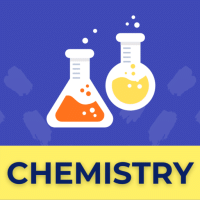Class 11 Exam > Class 11 Questions > Which among the following is not an example o...
Start Learning for Free
Which among the following is not an example of alicyclic compound
- a)Cyclohexane
- b)Cyclohexene
- c)Tetrahydrofuran
- d)Acetic acid
Correct answer is option 'D'. Can you explain this answer?
Verified Answer
Which among the following is not an example of alicyclic compounda)Cyc...
Acetic acid is a linear chain compound (acyclic) and hence it is not an example of ring compound (alicyclic).
Most Upvoted Answer
Which among the following is not an example of alicyclic compounda)Cyc...
Explanation:
An alicyclic compound is a type of organic compound that contains one or more rings of carbon atoms. These rings can be either saturated (containing only single bonds) or unsaturated (containing one or more double or triple bonds).
Cyclohexane:
Cyclohexane is a saturated alicyclic compound. It consists of a ring of six carbon atoms, with each carbon atom bonded to two hydrogen atoms. The carbon-carbon bonds in cyclohexane are all single bonds, making it a saturated compound.
Cyclohexene:
Cyclohexene is an unsaturated alicyclic compound. It is similar to cyclohexane, but it contains a double bond between two of the carbon atoms in the ring. The presence of the double bond makes cyclohexene an unsaturated compound.
Tetrahydrofuran:
Tetrahydrofuran (THF) is a heterocyclic compound, meaning it contains atoms other than carbon in the ring. It consists of a ring of four carbon atoms and one oxygen atom. THF is a cyclic ether and is commonly used as a solvent in organic chemistry.
Acetic acid:
Acetic acid is not an alicyclic compound. It is a simple carboxylic acid that consists of a methyl group (CH3) attached to a carboxyl group (COOH). It does not contain any rings of carbon atoms and therefore does not fall into the category of alicyclic compounds.
In Summary:
- Cyclohexane and cyclohexene are examples of alicyclic compounds.
- Tetrahydrofuran is a heterocyclic compound and is also considered an alicyclic compound.
- Acetic acid, on the other hand, is not an alicyclic compound as it does not contain any rings of carbon atoms.
An alicyclic compound is a type of organic compound that contains one or more rings of carbon atoms. These rings can be either saturated (containing only single bonds) or unsaturated (containing one or more double or triple bonds).
Cyclohexane:
Cyclohexane is a saturated alicyclic compound. It consists of a ring of six carbon atoms, with each carbon atom bonded to two hydrogen atoms. The carbon-carbon bonds in cyclohexane are all single bonds, making it a saturated compound.
Cyclohexene:
Cyclohexene is an unsaturated alicyclic compound. It is similar to cyclohexane, but it contains a double bond between two of the carbon atoms in the ring. The presence of the double bond makes cyclohexene an unsaturated compound.
Tetrahydrofuran:
Tetrahydrofuran (THF) is a heterocyclic compound, meaning it contains atoms other than carbon in the ring. It consists of a ring of four carbon atoms and one oxygen atom. THF is a cyclic ether and is commonly used as a solvent in organic chemistry.
Acetic acid:
Acetic acid is not an alicyclic compound. It is a simple carboxylic acid that consists of a methyl group (CH3) attached to a carboxyl group (COOH). It does not contain any rings of carbon atoms and therefore does not fall into the category of alicyclic compounds.
In Summary:
- Cyclohexane and cyclohexene are examples of alicyclic compounds.
- Tetrahydrofuran is a heterocyclic compound and is also considered an alicyclic compound.
- Acetic acid, on the other hand, is not an alicyclic compound as it does not contain any rings of carbon atoms.

|
Explore Courses for Class 11 exam
|

|
Question Description
Which among the following is not an example of alicyclic compounda)Cyclohexaneb)Cyclohexenec)Tetrahydrofurand)Acetic acidCorrect answer is option 'D'. Can you explain this answer? for Class 11 2025 is part of Class 11 preparation. The Question and answers have been prepared according to the Class 11 exam syllabus. Information about Which among the following is not an example of alicyclic compounda)Cyclohexaneb)Cyclohexenec)Tetrahydrofurand)Acetic acidCorrect answer is option 'D'. Can you explain this answer? covers all topics & solutions for Class 11 2025 Exam. Find important definitions, questions, meanings, examples, exercises and tests below for Which among the following is not an example of alicyclic compounda)Cyclohexaneb)Cyclohexenec)Tetrahydrofurand)Acetic acidCorrect answer is option 'D'. Can you explain this answer?.
Which among the following is not an example of alicyclic compounda)Cyclohexaneb)Cyclohexenec)Tetrahydrofurand)Acetic acidCorrect answer is option 'D'. Can you explain this answer? for Class 11 2025 is part of Class 11 preparation. The Question and answers have been prepared according to the Class 11 exam syllabus. Information about Which among the following is not an example of alicyclic compounda)Cyclohexaneb)Cyclohexenec)Tetrahydrofurand)Acetic acidCorrect answer is option 'D'. Can you explain this answer? covers all topics & solutions for Class 11 2025 Exam. Find important definitions, questions, meanings, examples, exercises and tests below for Which among the following is not an example of alicyclic compounda)Cyclohexaneb)Cyclohexenec)Tetrahydrofurand)Acetic acidCorrect answer is option 'D'. Can you explain this answer?.
Solutions for Which among the following is not an example of alicyclic compounda)Cyclohexaneb)Cyclohexenec)Tetrahydrofurand)Acetic acidCorrect answer is option 'D'. Can you explain this answer? in English & in Hindi are available as part of our courses for Class 11.
Download more important topics, notes, lectures and mock test series for Class 11 Exam by signing up for free.
Here you can find the meaning of Which among the following is not an example of alicyclic compounda)Cyclohexaneb)Cyclohexenec)Tetrahydrofurand)Acetic acidCorrect answer is option 'D'. Can you explain this answer? defined & explained in the simplest way possible. Besides giving the explanation of
Which among the following is not an example of alicyclic compounda)Cyclohexaneb)Cyclohexenec)Tetrahydrofurand)Acetic acidCorrect answer is option 'D'. Can you explain this answer?, a detailed solution for Which among the following is not an example of alicyclic compounda)Cyclohexaneb)Cyclohexenec)Tetrahydrofurand)Acetic acidCorrect answer is option 'D'. Can you explain this answer? has been provided alongside types of Which among the following is not an example of alicyclic compounda)Cyclohexaneb)Cyclohexenec)Tetrahydrofurand)Acetic acidCorrect answer is option 'D'. Can you explain this answer? theory, EduRev gives you an
ample number of questions to practice Which among the following is not an example of alicyclic compounda)Cyclohexaneb)Cyclohexenec)Tetrahydrofurand)Acetic acidCorrect answer is option 'D'. Can you explain this answer? tests, examples and also practice Class 11 tests.

|
Explore Courses for Class 11 exam
|

|
Signup for Free!
Signup to see your scores go up within 7 days! Learn & Practice with 1000+ FREE Notes, Videos & Tests.























